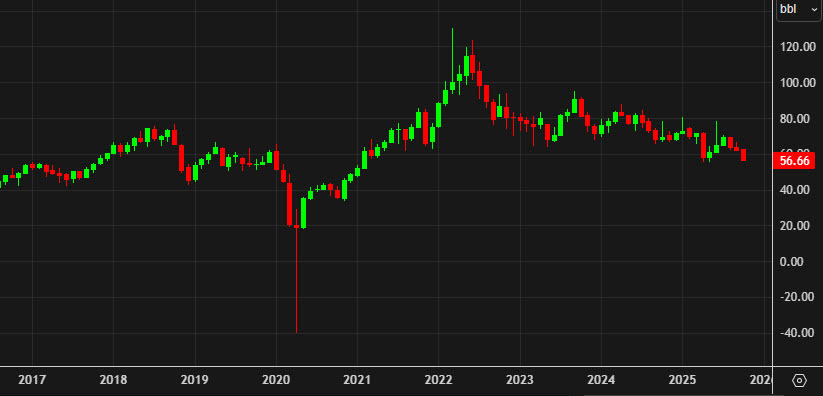WTI crude oil has decreased by $1.00 to $56.58, marking its lowest price since May. This decline reflects growing concerns about an oversupply in the market, as many analysts predict significant challenges ahead for oil prices.
Market Dynamics and Price Support
The recent downturn shows a concerning trend for crude oil as support levels appear to be weakening. Historical price points from April and May, which saw temporary lows of $55.12 and $55.30 respectively, will be critical in determining the market’s direction. For bullish investors, maintaining these levels is essential to prevent further declines.
If these support levels are breached, it could lead to a return to the lows witnessed in January 2021, which were significantly impacted by the demand destruction resulting from the COVID-19 pandemic. The pre-pandemic low was recorded in December 2018 at $42.36, but inflationary pressures since then would adjust this figure to approximately $54.65.
Future Outlook and Challenges
Looking ahead, analysts are warning of a potential glut in the market, with many barrels expected to flood the supply chain in the coming year. This scenario poses additional risks for crude oil prices, which have already shown vulnerability to external economic factors. As the market grapples with these challenges, stakeholders will need to closely monitor production levels and demand forecasts to gauge future price movements.
In summary, the current price drop for WTI crude oil signals a precarious point for the market, with critical support levels in question and the specter of oversupply on the horizon. Investors and industry experts will be watching closely to see how these dynamics unfold in the coming months.






